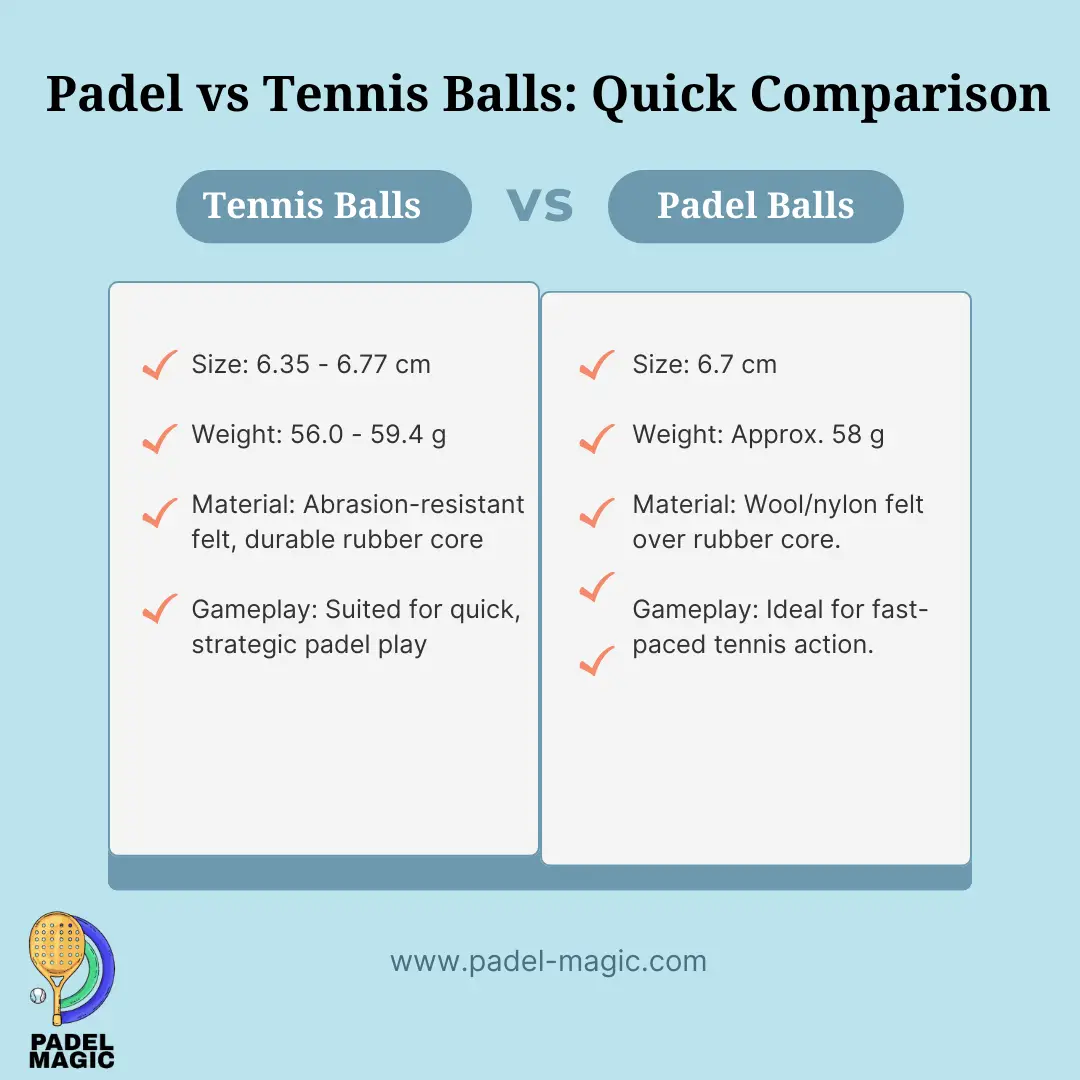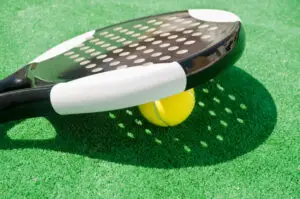Padel Balls vs. Tennis Balls: Understanding the Difference
Dive into the key differences between padel balls and tennis balls. This guide explores their distinct characteristics like size, weight, bounce, and material, which are essential for players who wish to understand how these variations influence the game dynamics. Perfect for both avid players and newcomers, get ready to gain insights that could enhance your gameplay in padel and tennis.
| Feature | Padel Ball | Tennis Ball |
|---|---|---|
| Diameter | 6.35 – 6.77 cm | 6.54 – 6.86 cm |
| Weight | 56 – 59.4 grams | 56 – 59.4 grams |
| Material | Rubber & Felt | Rubber & Felt |
| Bounce | 135 – 145 cm | 135 – 147 cm |
| Pressure | 10 psi – 11 psi | 14 psi |
Padel balls and tennis balls, while similar in appearance, have distinct differences that are tailored to their respective sports:
Size and Weight: Padel balls are slightly smaller and lighter than tennis balls. They typically measure between 6.35 and 6.77 cm in diameter and weigh between 56.0 and 59.4 grams, whereas tennis balls are about 6.7 cm in diameter and weigh around 58 grams.
Bounce: Padel balls have a lower internal pressure compared to tennis balls, resulting in a lower bounce. This is suitable for the smaller, enclosed padel courts.
Material and Texture: Both types of balls are made of a rubber core and covered with a felt material. However, the felt on padel balls is often designed to be more resistant to the abrasive surfaces of padel courts.
Durability: Due to the different playing surfaces and styles of play, padel balls are designed to withstand the specific wear and tear of padel courts, which can be different from the wear on tennis balls.
Usage: While both balls are used in racket sports, the specific design of each is optimized for the rules, court surfaces, and playing styles of padel and tennis, respectively.
Overall, these differences ensure that each type of ball performs optimally in its respective sport, with padel balls offering lower bounce and slightly lighter weight to suit the fast-paced nature of padel on smaller courts.
Frequently Asked Questions
Are padel balls the same as tennis balls?
No, padel balls are not the same as tennis balls. While they look similar, padel balls are slightly smaller, lighter, and have less internal pressure, resulting in a different bounce and feel.
What is the difference between tennis balls and padel balls?
The primary differences are in size, weight, and bounce. Padel balls are smaller and lighter than tennis balls and have a lower bounce, which suits the enclosed padel courts and the game’s unique style.
Can you play Padel with tennis balls?
Technically, you can, but it’s not ideal. Tennis balls have different properties that can affect the gameplay of padel. Using a padel ball ensures the game is played as intended.
How does the bounce of a padel ball compare to a tennis ball?
Padel balls have a lower bounce compared to tennis balls due to their lower internal pressure, which affects how the game is played and the strategies used on the padel court.
Can the same balls be used for both padel and tennis?
Although it’s possible, it’s not recommended. Each sport’s balls are designed for specific court surfaces and playing conditions to provide the best experience.
Does the choice of the ball affect the gameplay in Padel?
Absolutely. The type of ball used can significantly impact the speed, bounce, and overall dynamics of a padel game.








